TS
boleroes11
Modern Counterinsurgency (COIN) Aircraft.
Modern counterinsurgency aircraft. Part 1 of the
Yesterday, 08:41 Print

During the Vietnam War, the U.S. military leadership came to the conclusion that was created for the "great war" with the Soviet Union supersonic jet fighter aircraft are ineffective against guerrillas operating in the jungle. Part of the problem is solved by remaining in the line of piston stormtroopers A-1 "Skayreyder" and B-26 bombers "Invader" and converted to percussion of training vehicles and helicopters.
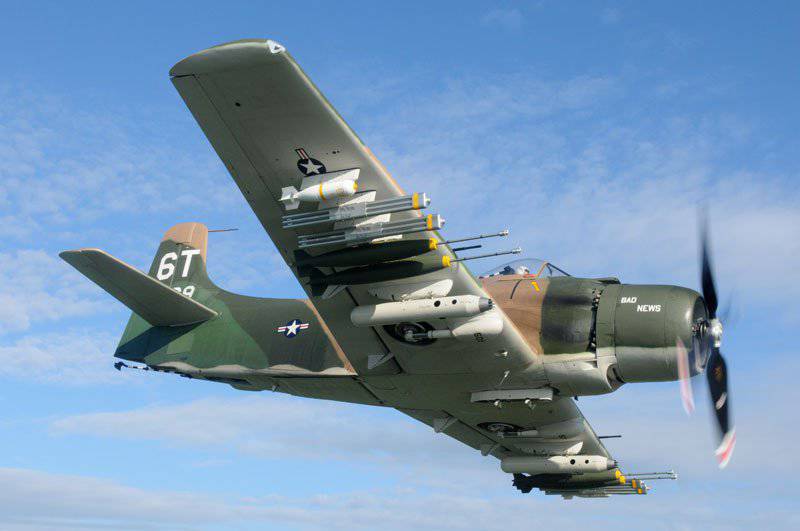
Assault A-1 "Skayreyder"
However, the loss of life and the development of combat aircraft have created during World War II made them inevitable "departure from the scene" only a matter of time, and the military trainer aircraft and attack helicopters were very vulnerable to anti-aircraft fire VC.
Taking into account all these factors, the U.S. launched several programs to create light "counterinsurgency" stormtroopers adapted for operations in conditions of Southeast Asia. The work was the creation and adoption of highly successful turboprop OV-10 "Bronco" and the A-37 turbojet "Dragonfly."

OV-10 "Bronco"
Taken into service shortly before the end of the Vietnam War, these aircraft for many years to become a kind of "standard" light attack vehicles intended for use against irregular forces. They are optimally combines the good security, high agility, wide range of weapons, based on the ability of untrained unpaved airfields and high operating costs. A number of countries have problems with "illegal armed groups" these stormtroopers are still in use.
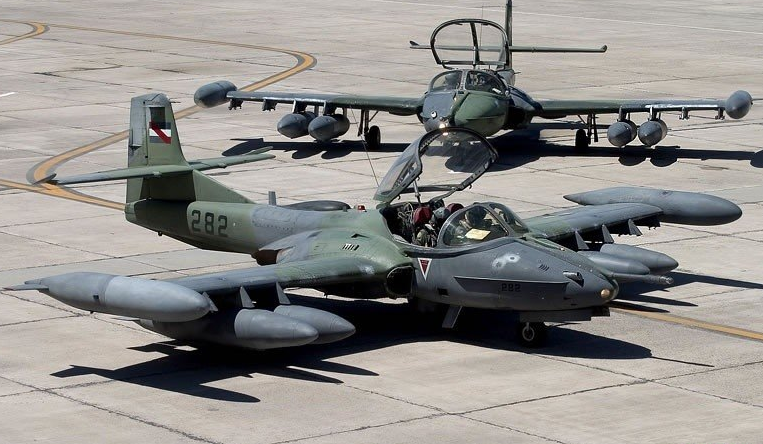
A-37 "Dragonfly"
Another "counterinsurgency" aircraft, which received wide distribution, became a Swiss education - training turboprop aircraft (TCB) - Rilatus PC-7, launched into mass production in 1978.

Rilatus PC-7
Put into service in the Air Force more than 20 countries, this low-wing monoplane, c, retractable tricycle landing gear was popular among pilots and maintenance personnel. There were built more than 450 vehicles of this type.
The aircraft is a very successful turboprop Pratt Whitney Canada PT6A-25A 650 hp PC-7 could carry up to 1040 kg payload to 6 knots external suspension. Including: NAR, machine gun containers, bombs and incendiary tanks.
Despite the initially peaceful trainer machine status RS-7 is very actively used in combat. Often on the set of Switzerland unarmed aircraft and suspension components mounted sights already in countries of the operator, that allows you to bypass the Swiss legislation restricting the supply of arms.

The largest armed conflict involving "Pilatus" became the Iran-Iraq war. PC-7 used Iraqi Air Force to provide close air support, as scouts-spotters, they even sprayed with chemical warfare agents.
Chad Air Force used "Pilatus" to bomb rebel positions, both on its own territory and in neighboring Sudan.
In Guatemala, the PC-7 attacked by rebel camps from 1982 until the end of the conflict in 1996.
In 1994, the Mexican Air Force PC-7 was used for attacking positions "EZLN" in Chiapas. This action by the Swiss government was deemed illegal because the planes were supplied only for educational purposes and without weapons. As a result, Switzerland has introduced a ban on the supply of PC-7 in Mexico.
A very significant role armed PC-7 played in the elimination of the Angolan opposition movement UNITA. They flew European and South African pilots hired by the Angolan government through the South African company "Executive Autkoms" specializing in providing services in the field of security. Planes loaded assault strikes on militant positions and camps, as well as used as an advanced aircraft gunners, "marking" phosphorus munitions targets for the MiG-23.
Further development of the Pilatus PC-7 aircraft became Pilatus PC-9 and Pilatus PC-21.
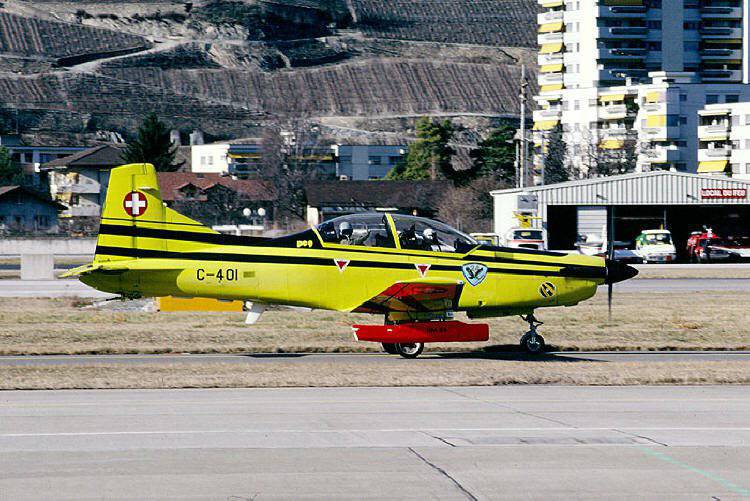
Pilatus PC-9
PC-9 differs from the PC-7 engine Pratt & Whitney Canada PT6A-62 shaft horsepower 1150l.s., Reinforced airframe, improved airfoil fuselage and wings and an ejection seat. Production began in 1986. It carries the same payload, as well as PC-7. Its basically ordered the country that already have experience in operating the PC-7. Total produced about 250 RS-9. This aircraft is in contrast to the earlier model did not have much combat use. PC-9 are in the Air Force in Chad and Myanmar involved to perform reconnaissance missions and counterinsurgency.
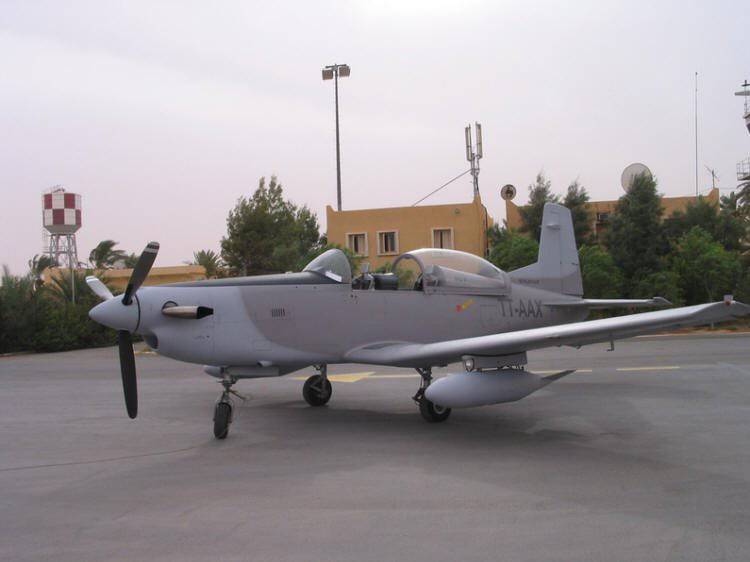
PC-9 Air Force in Chad
At present, the Israeli company «Elbit Systems» is working to improve the strike potential PC-7 and PC-9. It is assumed that after appropriate modifications increase information awareness and pilots be possible to use high-precision aircraft armament.
On the basis of the Swiss Pilatus PC-9 was built in the U.S. TCB T-6A Texan II.
The most significant external honors American aircraft from its Swiss "grandparent" is a modified form of the front of the cockpit.
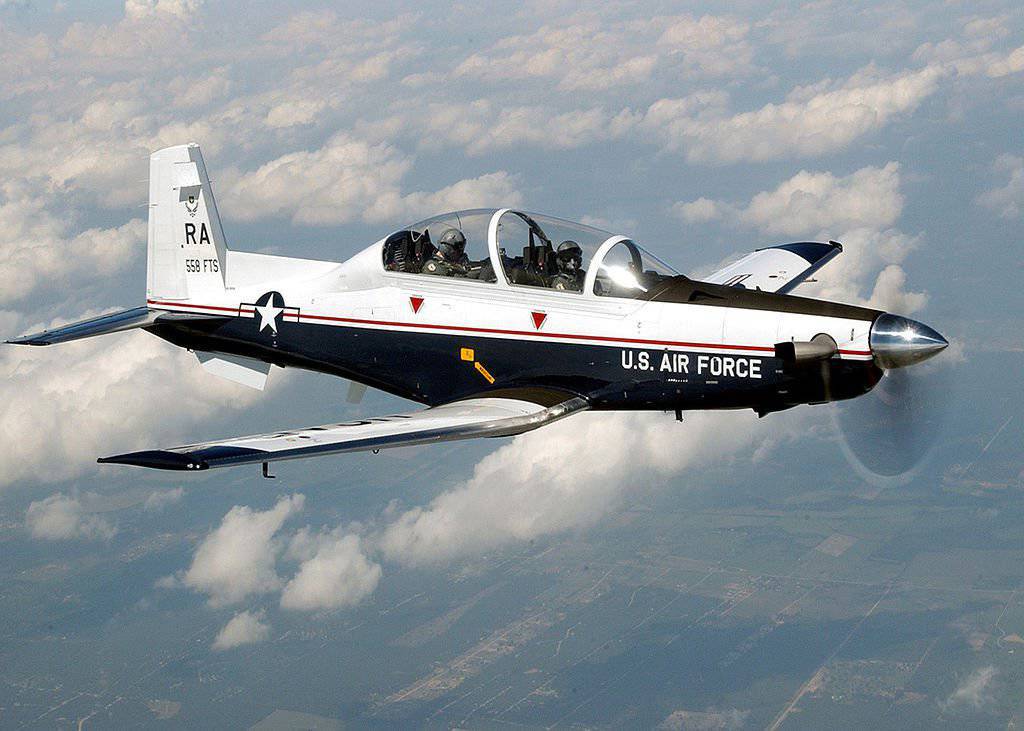
T-6A Texan II
Aircraft avionics Texan II allows you to use the machine not only for the initial training of pilots, but also for training pilots to perform a variety of combat missions. Arms located on six hardpoints.
Created as a specialized version of the shock machine, designated AT-6B. The aircraft is designed for different tasks: surveillance and reconnaissance with the possibility of high-precision coordinate registration, streaming video and data, close air support, advanced aircraft guidance, participation in operations to combat drug trafficking, as well as for reconnaissance in disaster areas.
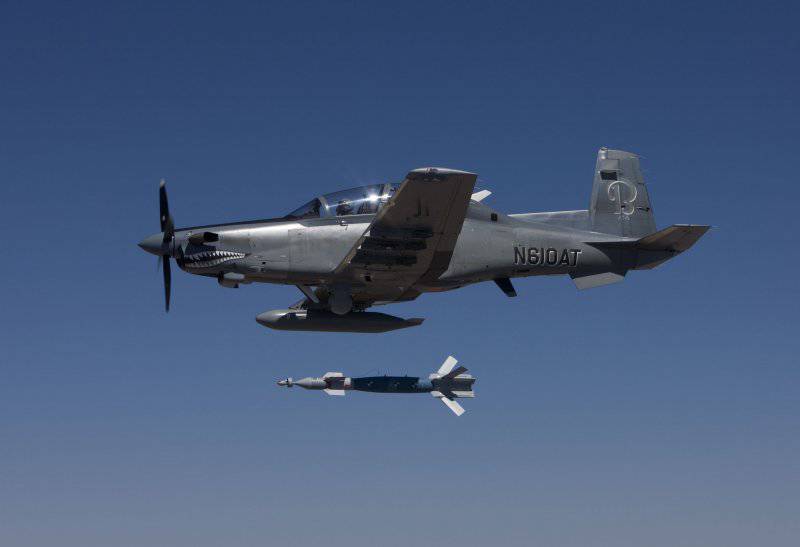
AT-6B
Compared with CF aircraft is equipped with a more powerful turboprop engine, improved sighting and navigation system and a container with equipment day and night vision. Installed armor protection for cab and engine. Protection system IR and laser guided missiles homing "ground-to-air" and "air" may include illumination warning system and automatic ejection of IR-traps. Plane set: control system EW ALQ-213 radio system is protected by ARC-210 data link equipment.
Available on the AT-6B equipment allows you to apply various precision-guided munitions, including Hellfire missiles and Maverick, guided bombs Paveway II / III / IV and JDAM, payload weight remained the same as in the "Pilatus". Street armament consists of two 12.7-mm machine guns.
Pilatus PC-21 first flew in 2002, and from 2008 aircraft delivered to the customers. When designing the PC-21 specialists «Pilatus» used all the experience gained by the family of machines PC. Currently produced vehicles of this type there are not many (about 80).
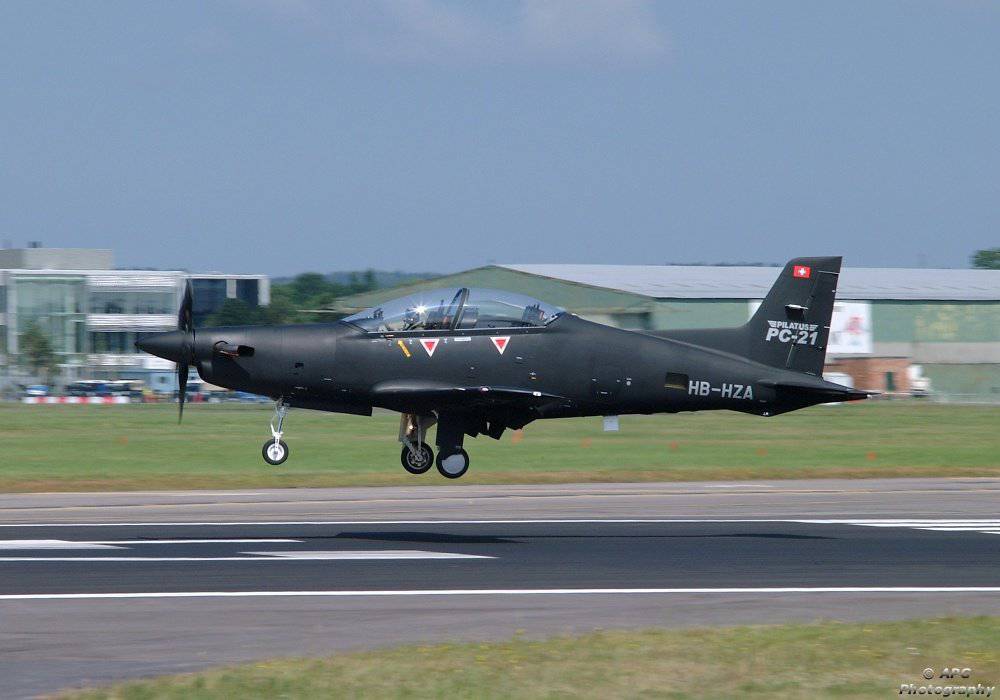
PC-21
Applied to PC-21 wing aircraft provided higher roll rate and maximum flight speed than in the case of PC-9. When creating this aircraft was assumed that it will be possible to train pilots of any profile. RS-21 is equipped with a complex programmable flight management systems, allowing to simulate aircraft flight characteristics of different classes and perform various missions. Much attention is paid to reducing operating costs and ease of ground handling of aircraft.
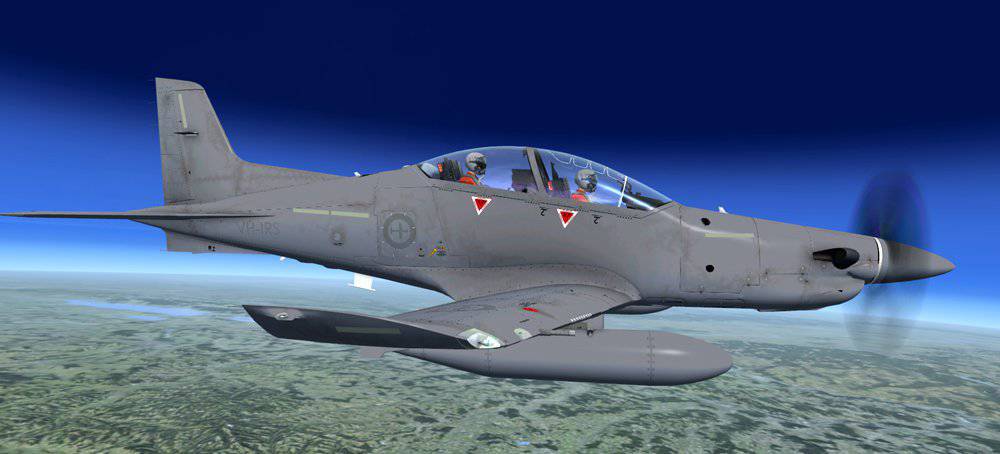
The aircraft has five suspension points for weapons such as "air-land". In addition to learning and teaching and training purposes, PC-21 can be used in "anti-terrorist operations." Potential customers are specialized "counterinsurgency" version of this machine with weapons and armored vehemently existing however, so far only in the project.
Hallmark of the Brazilian aircraft industry became TCB Embraer EMB-312 Tucano. He is one of the most successful modern trainer aircraft, has been recognized as in the Brazilian Air Force, as well as abroad.
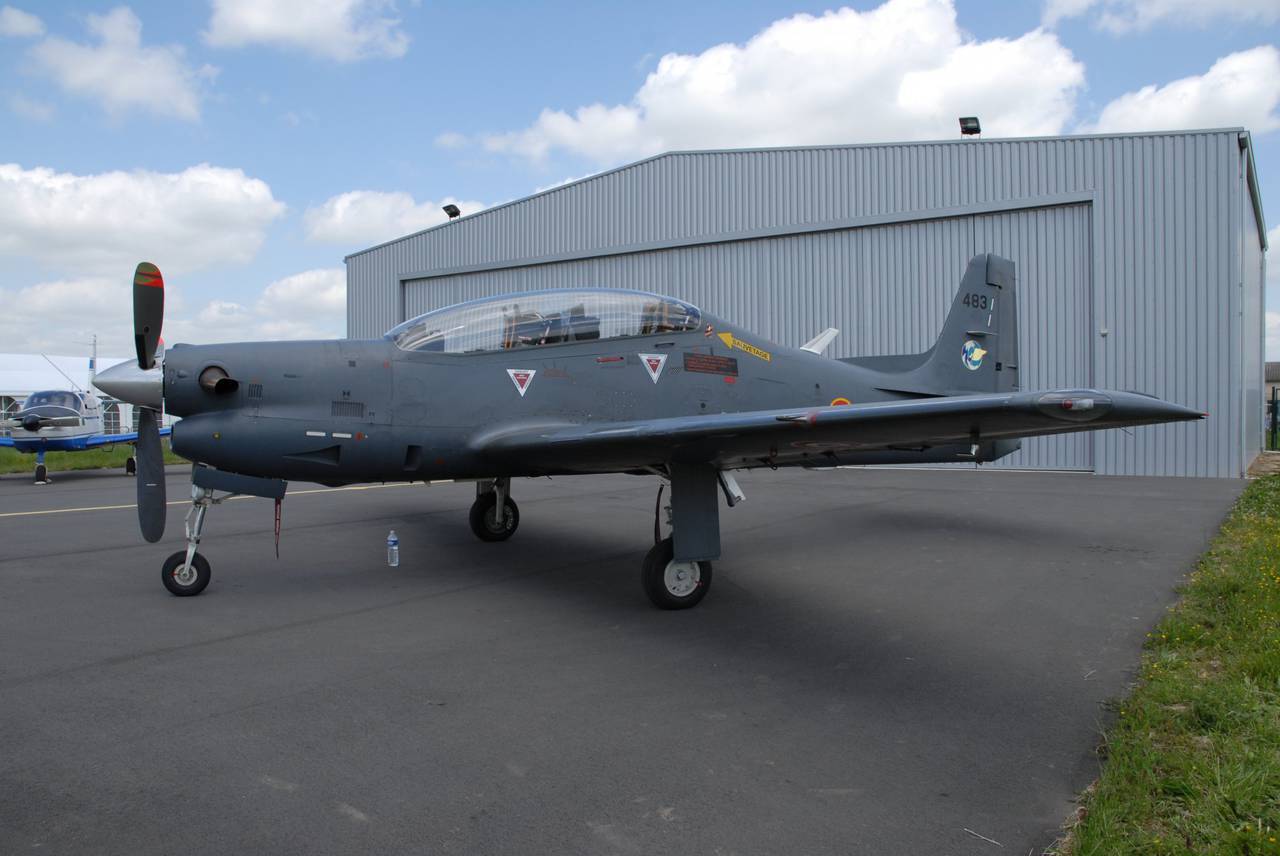
Embraer EMB-312
Still in the design process it was assumed that the aircraft will be used not only for training of Air Force pilots, as well as a light attack aircraft, capable of efficiently at relatively low cost used in counterinsurgency operations, where there is no threat from fighters and modern air defense systems.
On four underwing pylons housed armament general weighing up to 1000 kg. EMB-312 aircraft in the embodiment may use a machine-gun attack aircraft containers, rockets and bombs.
Much of the success of the aircraft was predetermined rational layout, the aircraft turned out pretty easy - its dry weight does not exceed 1870 kg and turboprop Pratt & Whitney Canada PT6A-25C (1 x 750 l. C.). To rescue the crew EMB-312 aircraft equipped with two ejection seats.
Under the designation T-27 "Tucano" planes began with September 1983 by the armed forces combat units Brazilian Air Force and nearly 20 countries. It was built more than 600 vehicles of this type. South and Latin America actively used "Tucano" as patrol, counterinsurgency and combat drug trafficking.
Besides the training options with the ability to combat application was developed specialized light attack AT-27 "Tucano". The plane was carrying tighter combat load, but had modified sighting equipment and light armor protection.
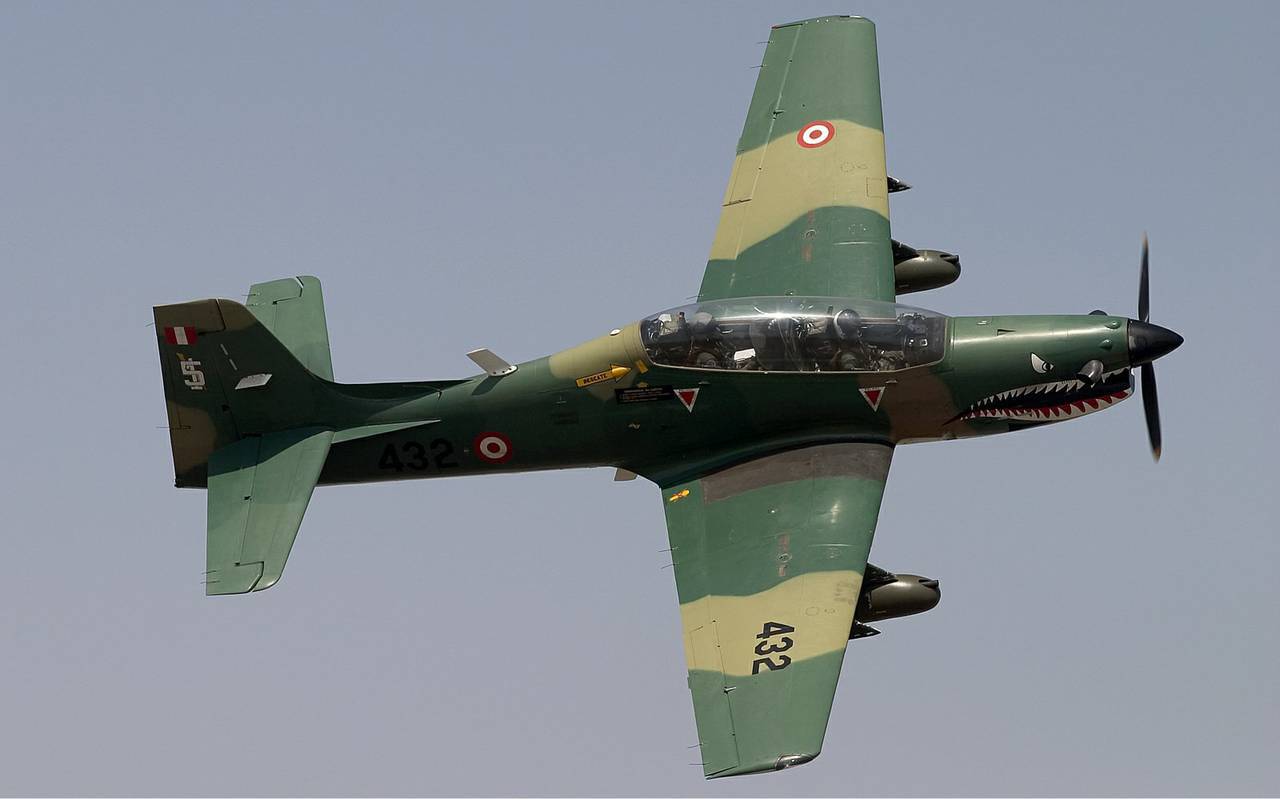
AT-27
Air Force light attack aircraft were used in armed conflict Peru with Ecuador Cenepa River in 1995.
Venezuelan Air Force lost some AT-27, who were shot down by anti-aircraft fire and interceptors F-16A during an anti-government uprising in November 1992.
Participation in full-scale combat operations for this aircraft was not too frequent use of conventional steel patrol and reconnaissance missions and actions to curb drug trafficking. In the bank "Tukano" no one has successfully intercepted and shot down the plane with a load of drugs.
In most cases, drugs are used for transportation of small piston aircraft, in comparison with which this turboprop machine looks a real fighter.
Further development of the EMB-312 Tucano EMB-314 was the Super Tucano, production of which began in 2003. The upgraded aircraft received turboprop Pratt & Whitney Canada PT6A-68C power of 1600 hp Airframe was reinforced cockpit received kevlar protection and new avionics.
The upgraded aircraft became long by almost half a meter and significantly potyazhelel (empty weight of the aircraft is equal to 3,200 kilograms).
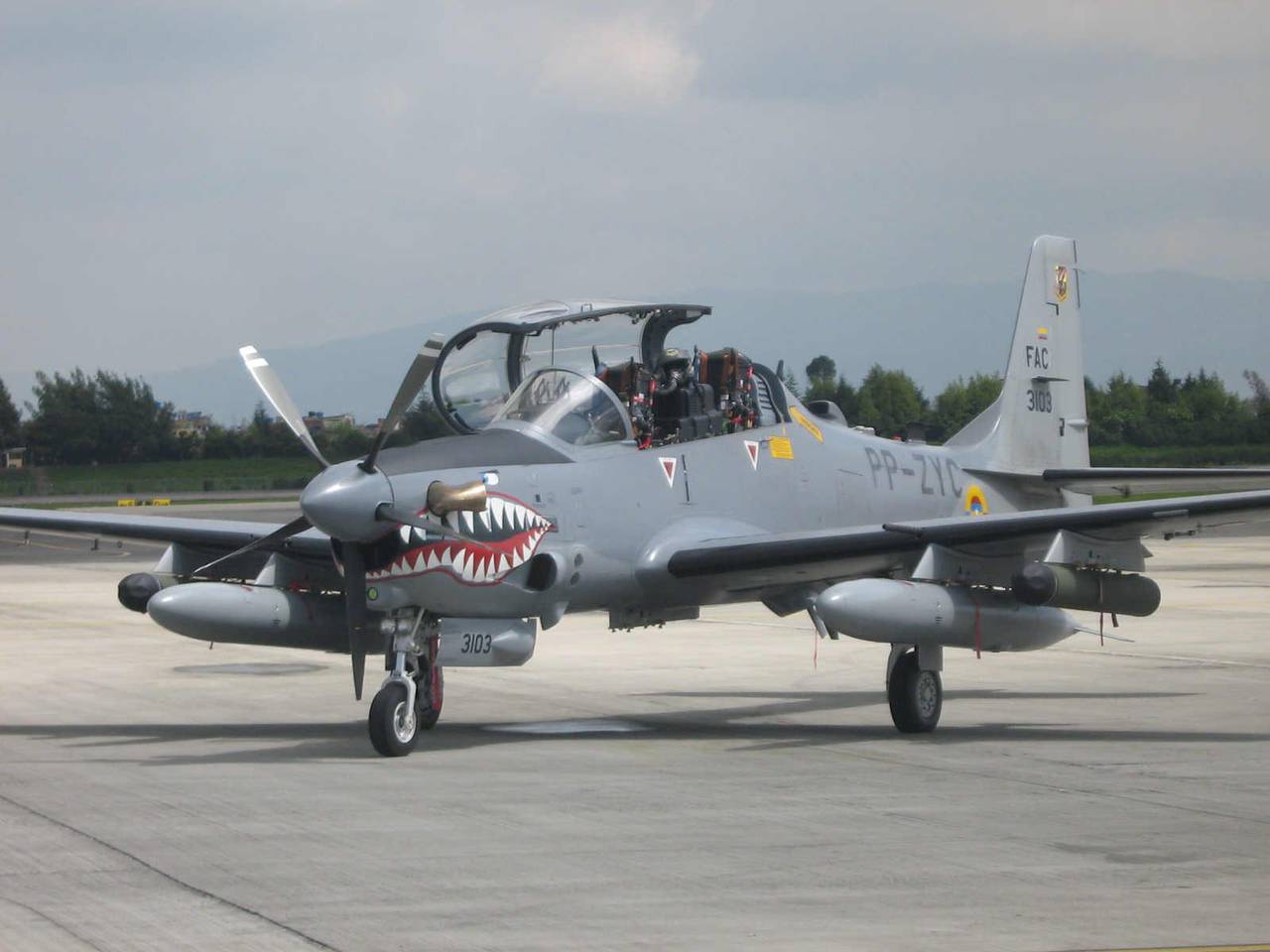
EMB-314 Super Tucano
Was strengthened weapons "Super Tucano" received two built machine gun 12.7 mm in the wing root, on five hardpoints can be placed combat load weighing up to 1550 kg. The range of weapons including machine guns and gun pods with weapons caliber 7.62 to 20 mm, guided and unguided bomb and missile weapons.
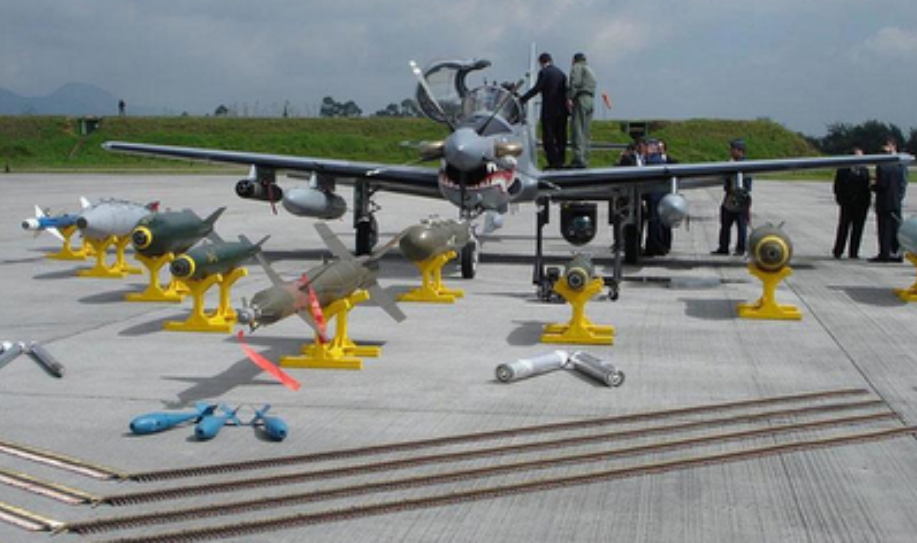
Single light attack variant was designated A-29A instead copilot seat on the plane was set-sealing fuel tank capacity of 400 liters.
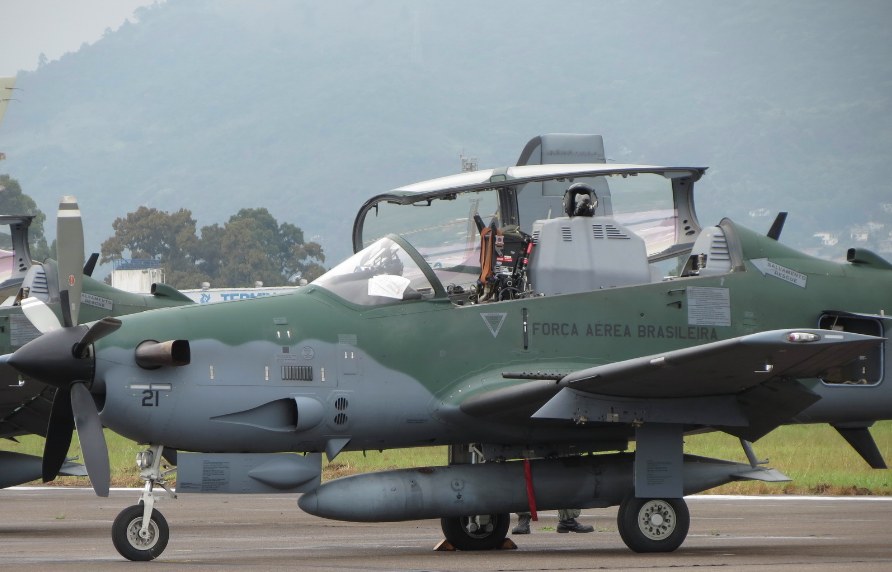
Single Forward A-29A Super Tucano
Modification of A-29B has two jobs pilots, and moreover is equipped with various electronic equipment needed to control the battlefield.
Like the previous model "Super Tucano" is popular in countries engaged in combating narkokortelyami and various rebels. Currently, more than 150 stormtroopers "Super Tucano" made the Air Force a number of countries, flew 130,000 hours, including 18,000 hours in combat missions.

Most intensively used in the fighting A-29B of the Colombian Air Force. The first case of Super Tucano combat occurred in January 2007, when the aircraft struck the rocket and bomb the camp forming "the Revolutionary Armed Forces of Colombia." In 2011-2012, they applied precision strikes ammunition Griffin laser guided strong points guerrillas. In 2013, Colombian light attack aircraft also accomplishes combat missions to fight the rebels and drug trafficking.
Interest in acquiring the "Super Tucano" expressed the U.S. Special Operations Command. After lengthy negotiations, in February 2013 the U.S. and Brazilian Embraer signed a contract, according to which the A-29 aircraft will be built under license in the United States. The contract involves the construction of at least 20 attack aircraft in a slightly modified configuration, which in the future will support special units from the air.
Unlike Brazilian "Super Tucano" American assembly must be completed the same avionics mounted on light attack aircraft AT-6B. Specifically provides an opportunity to use a night light and use precision-guided munitions, which will significantly increase the potential impact of storm troopers.
Just negotiating the purchase or lease of "Super Tucano" underway in Afghanistan and Iraq.
The success of the Brazilian Embraer was determined by the fact that its light attack aircraft appeared in what is called "the right time and right place."
Their flight, operational, combat characteristics and cost largely conform to the requirements of the Air Force in need of such a plane. Despite the fact that "Tucano" appeared later than "Pilatus", played a significant role in the absence of Brazilian law restrictions on the supply of weapons to areas of fighting.
Sources:
http://www.pilatus-aircraft.com/
http://www.cofe.ru/avia
==========================
0
17.5K
15
Thread Digembok
Urutan
Terbaru
Terlama
Thread Digembok
Komunitas Pilihan